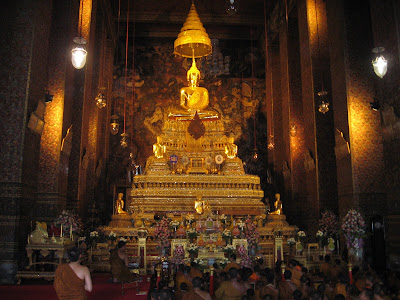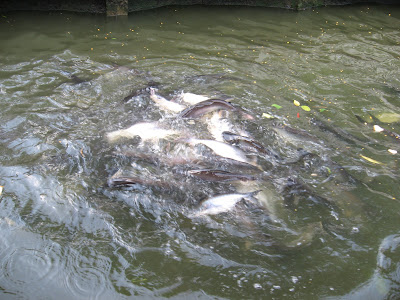The Grand Palace
Ask anyone who has been to Bangkok what their 'must see' list is and without fail they will always include The Grand Palace, which houses a number of attractions including Wat Phra Keow (Temple of the Emerald Buddha).

Warning sign before entering the Grand Palace

The guard at the entrance - Yes! Real bullets!

Visitors are scrutinised for correct dress

Platoons of soldiers are stationed in and around the Grand Palace

The entrance to the Grand Palace

The 'Hermit Doctor'

The entrance to Wat Phra Keow is guarded by giants

The Emerald Buddha

The Royal Pantheon building, with gilded chedis on both sides

The Chakri Maha Prasat Hall

Soldiers in full dress uniform keep an eagle eye on 'farangs'

In the distance, The Royal Funeral Hall

Leaving the Majesty of the Grand Palace
 Outside the main gate: Back to reality
Outside the main gate: Back to reality




















































